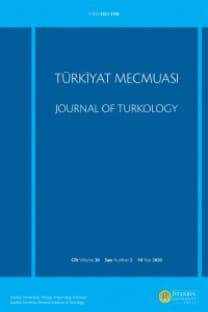Türk Atışı veya Galatı Meşhur Part Atışı I: Eski Çağlarda Türk Atışı
Türk atışı/Part atışı süvarilerin dörtnala giderken 180 derece dönüp isabetli oklar atması yöntemine verilen addır. Türk Atışı, Orta Asya göçebeleri tarafından kullanılan ünlü bir süvari atış tekniğidir. Turan taktiğinin ilk aşaması olan sahte ricat aldatmacasının zarar görmeden ve başarılı bir şekilde sonuca ulaştırılabilmesi için en önemli unsurdur. Söz konusu atış yöntemini Batılılara karşı ilk kez etkin biçimde kullanan kavim Partlar (MÖ 247-MS 224) olmuştur. Bu atış tekniğinin Romalıların Harran/Carrhae Savaşı’nda (MÖ 53) Partlara yenilmeleri üzerinde büyük etkisi olmuştur. Bundan dolayı Batı’da bu atış tekniği uzun süre Part atışı adı ile korku ve saygı ile anılır olmuştur. Bununla birlikte söz konusu adlandırma pek doğru değildir. 3000 yıllık Türk kültür ve sanatındaki süreklilik, arkeolojik ve tarihi kayıtlar bu atış tekniğinin “Türk atışı” adı ile anılmasını gerekli kılmaktadır. Bu makale serisi Part atışı adı ile anılan atış yönteminin Türk atışı adı ile anılması gerektiği gerçeğini somut tarihi kanıtlar ile ortaya çıkarmayı amaçlamaktadır.
Anahtar Kelimeler:
Part atışı, Türk atışı, Turan taktiği, sahte ricat, süvari, piyade
Turkish Shot or Common Mistake Parthian Shot I: Turkish Shot in Ancient Ages
Turkish shot/Parthian shot is the name given to the method of cavalrymen turning 180 degrees while galloping and shooting accurate arrows. Turkish Shooting is a famous cavalry shooting technique used by Central Asian nomads. It is the most important element of the fake retreat deception, which is the first stage of the Turan tactic, used in order to win with a minimum of casualties. The first people to use this shooting method effectively against Westerners were the Parthians (247 BC - 224 AD). This shooting technique made a great contribution to the Romans’ defeat by the Parthians at the Battle of Harran/Carrhae (53 BC). Therefore, in the West, this shooting technique has long been known as the feared and respected Parthian shot. However, the naming in question is not quite correct. From 3000 years of Turkish culture and art, and archaeological and historical records, it is clear that this shooting technique should be called “Turkish shot”. This series of articles, using concrete historical evidence, aims to reveal the fact that the shooting method, which is called the Parthian shot, should be called the Turkish shot.
Keywords:
the Turkish shot, the Parthian shot, Turan tactic, fake retreat, cavalry, infantry,
___
- Birinci, Necati (Editör), Türk Dünyası Kültür Atlası (İslam Öncesi Dönem), Cilt I, Yayına Hazırlayan: Yavuz Tiryaki, Türk Kültürüne Hizmet Vakfı, İstanbul 1997.
- Cernenko, Ev ve McBridge, Angus, M.V. Gorelik, The Scythians (700-300 BC), ed. Martin Windrow, Osprey Publishing, London 1983.
- Durmuş, İlhami, İskitler (Sakalar), Genelkurmay Askerî Tarih ve Stratejik Etüt Başkanlığı Yayınları, Ankara 2008.
- Durmuş, İlhami, Sarmatlar, Türkler, Cilt: 1 Sayfa: 637-647: https://www.altayli.net/sarmatlar.html
- İnayet, Alimcan, “Türklerin Uzakdoğu Siyasi ve Kültür Tarihine Etkileri (T’ang ve Yuan Hanedanlığı Dönemi Örneği)”, Türk Dünyası İncelemeleri Dergisi, Cilt: VIII, Sayı 1 (2008), 141-147.
- Kara, Gülnar, “Tang Hanedanı’nın Türk Topraklarını Hâkimiyet Altına Alma Çabaları”, Bilig, Sayı 84 (Kış 2018), 45-67.
- Lippiett, Rick, “The Parthian”, The Parthian Shot Newsletter of the British Horseback Archery Association, Issue 2 (June 2010), 1-8.
- Mayor, Andrienne, The Amazons, Princeton University Press, United States of America 2014.
- Öngel, Hasan Basri, “Gelişim Sürecinde Erken İç Asya Türk Okçuluğu”, G.Ü. Gazi Eğitim Fakültesi Dergisi, Cilt 21, Sayı 2 (2001), 189-215.
- Veg, Sebastian (Ed. ve koordinatör), Preservation of the Koguryo Kingdom Tombs, United Nations Educational, Scientific and Cultural Organization UNESCO, September 2005.
- Wallace, Leslie, “A Biographical Approach to the Study of the Mounted Archer Motif during the Han Dynasty”, Memory and Agency in Ancient China: Shaping the Life History of Objects, ed. Francis Allard, Yan Sun, Kathryn M Linduff, Cambridge University Press, Cambridge, United Kingdom, New York 2018, içinde 197-215. ...
- Başlangıç: 1925
- Yayıncı: İstanbul Üniversitesi Türkiyat Araştırmaları Enstitüsü
Sayıdaki Diğer Makaleler
Polonyalı Müslümanların büyük müftüsü Jakub Szynkiewicz (1884-1966) ve Karaimlerle temas
Türk Atışı veya Galatı Meşhur Part Atışı I: Eski Çağlarda Türk Atışı
Ekim Devriminin Mirası: Kızıl ve Beyazların Savaşı
Çalkantılı Bir Dönemin Kültür Sahnesi Olarak Dârülelhan: Geleneğin Yeniden Tanımlanması
